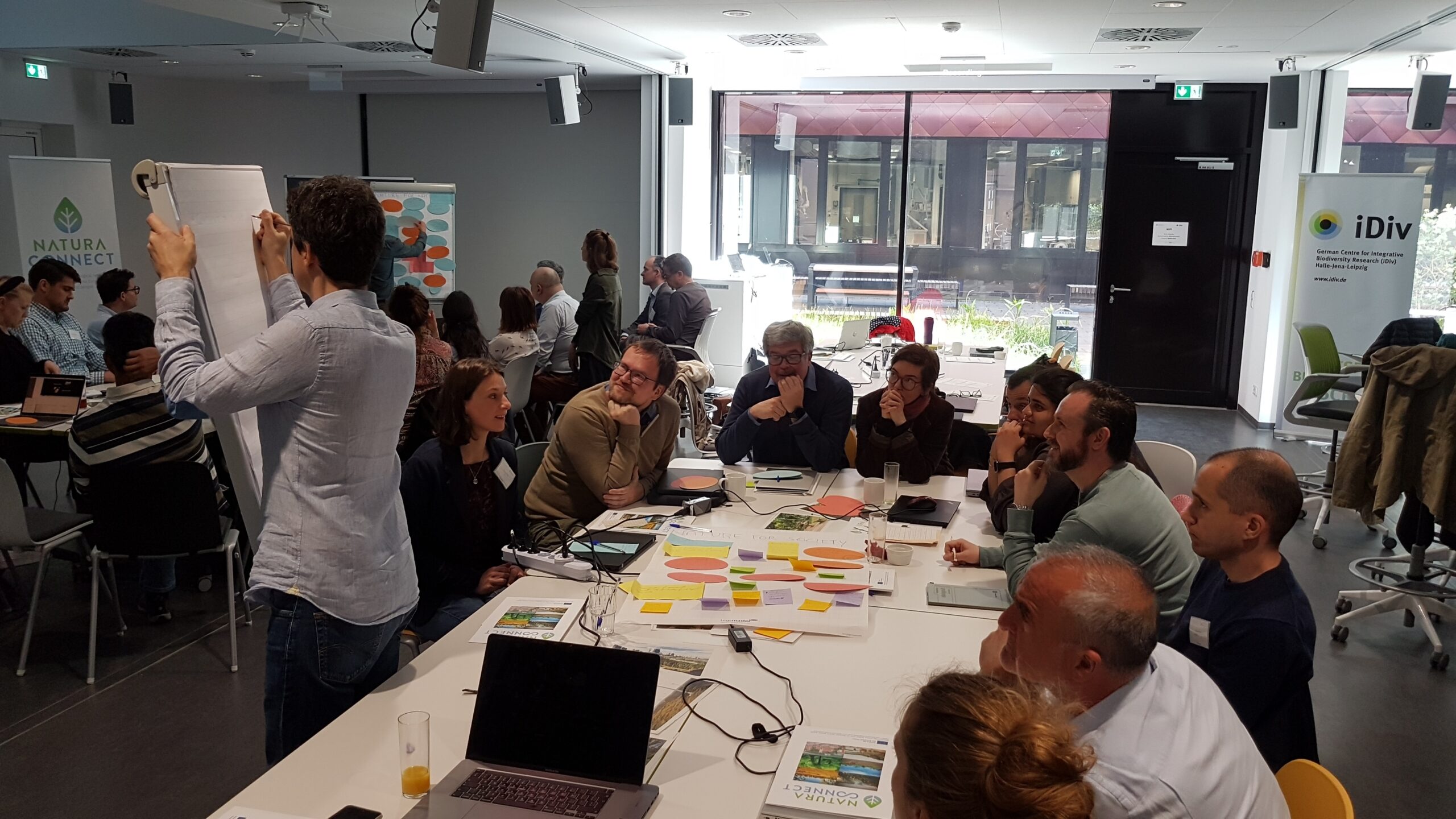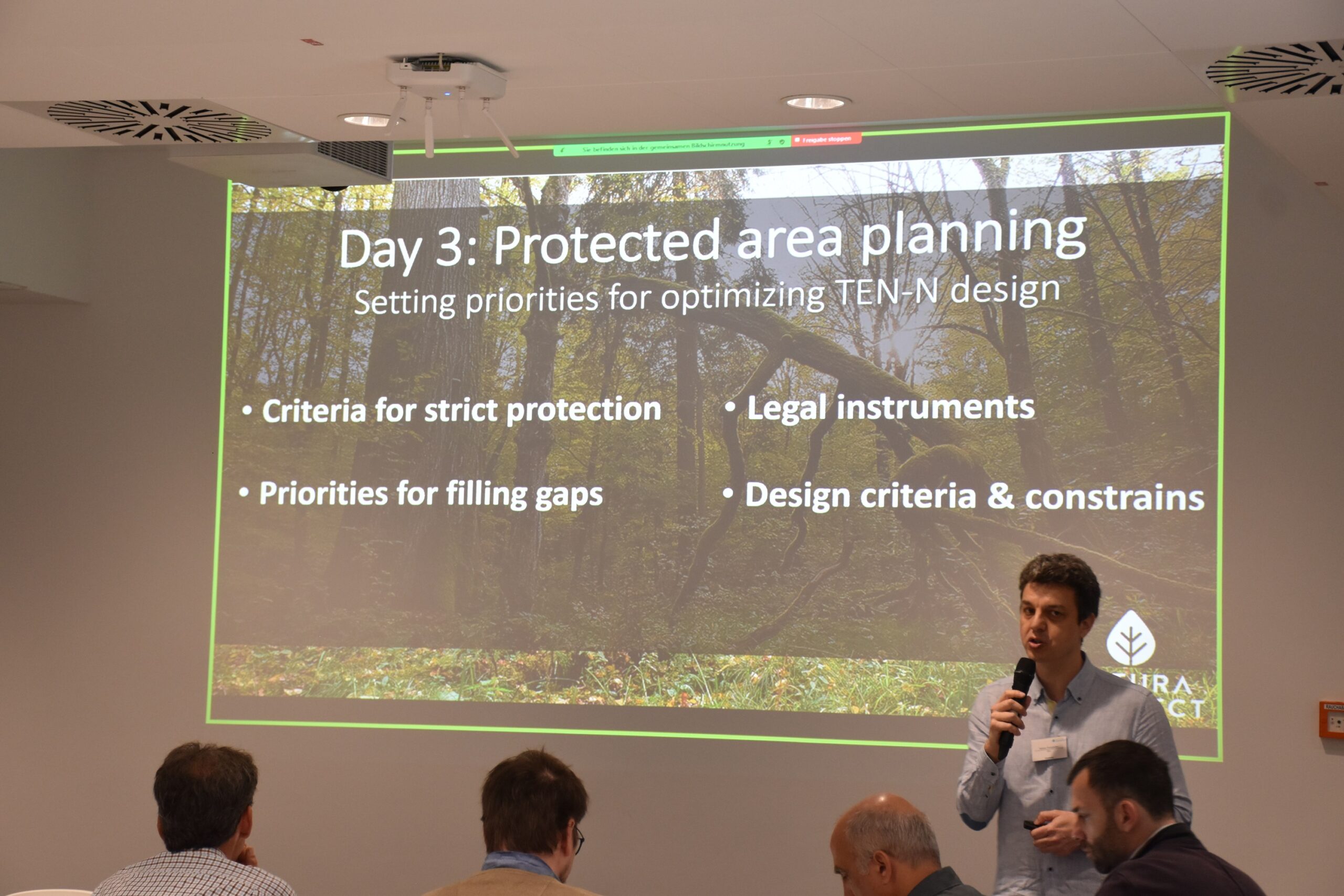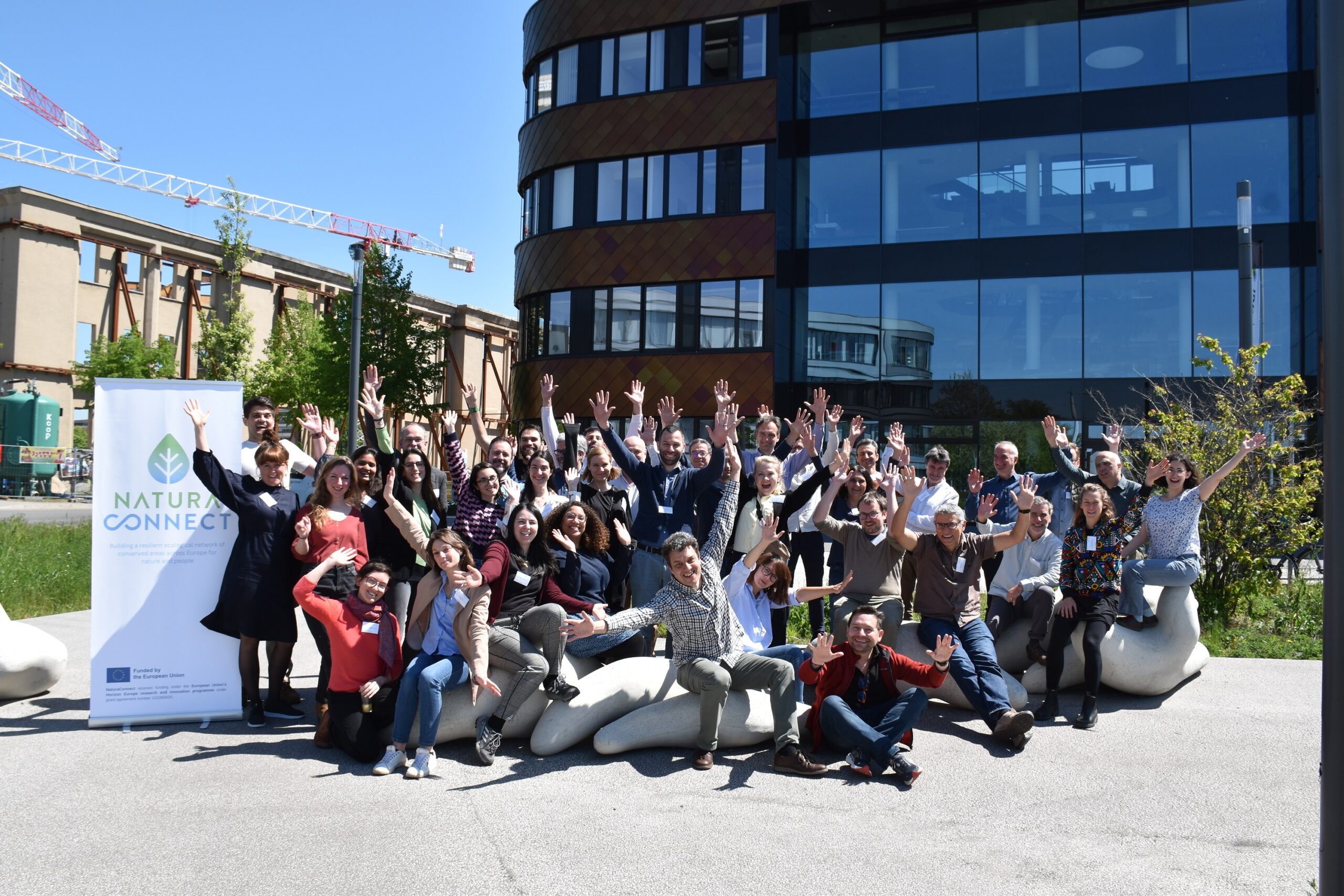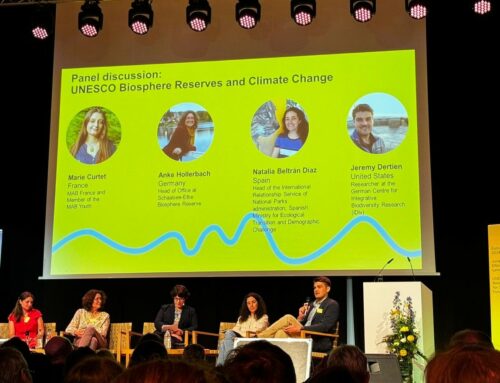Exploring visions for possible Nature Futures in Europe
Reflections from NaturaConnect’s Nature Futures Scenarios stakeholder workshop
May 8-10, 2023
From 8-10 May, more than 40 participants across Europe gathered at the German Centre for Integrated Biodiversity Research (iDiv) in Leipzig, Germany, for a three-day workshop to explore visions for possible Nature Futures in Europe. Participants represented institutions and stakeholder groups from the European environment, conservation, hunting and land-use planning sectors, as well as members of the NaturaConnect project.
The workshop solicited different perspectives and preferences regarding future biodiversity protection in Europe, accounting for multiple values and aspects of Nature. Participants explored how priorities might look like under different land-uses, societal values and nature conservation, and how these could affect the design of a truly coherent Trans-European Nature Network (TEN-N).
What is the Nature Futures Framework and how does it relate to the project?
The Nature Futures Framework was developed by the Intergovernmental Science-Policy Platform on Biodiversity and Ecosystem Services (IPBES) that informs the Convention on Biological Diversity (CBD). This new and flexible tool creates nature-centred visions and scenarios incorporating different stakeholder visions. The concept includes three different value perspectives of nature, namely: nature for nature, nature for culture and nature for society, all of which are envisaged to be considered when developing NaturaConnect’s blueprint for the TEN-N of conserved areas:

Figure source: Durán et al. 2023, adapted from Kim et al. 2021
Day 1: Scenarios for nature futures. Exploring plural visions and developing storylines for Nature in the European Union.
The event started with a presentation of the theoretical background for the Nature Futures Framework, and how NaturaConnect will use this framework to develop specific Nature Futures for Europe in collaboration with different stakeholders. The participants jointly explored and shared their visions for possible Nature Futures in the European Union. Using the three value perspectives of nature in the Framework (nature, culture, and society) workshop participants considered the following central question: How do you imagine European landscapes under different nature futures?
To address this question, participants brainstormed:
- What would be the main changes happening in different European landscapes?
- How would people relate to the landscape?
- What would be the dominant changes in land-use?
- What would be the reasons for people to conserve nature?
- How often would people in cities connect to nature, where and how?
- What types of nature-based solutions would you expect?
Discussions on potential changes in agriculture, forestry, energy, freshwater, and urbanization aimed to help identify priorities to design a connected and resilient network of European protected areas. The discussions were documented and will help to develop Nature Futures storylines and scenarios for Europe.
Reflecting on the day’s rich discussions, Néstor Fernández, Deputy Coordinator of NaturaConnect, and representative from iDiv and Martin Luther University Halle-Wittenberg, noted:
“Nature conservation can be designed in very different ways and the participants provided a rich variety of ideas and values. For example, some stakeholders prioritized the protection of large areas of self-sustained ecosystems, which is closer to a vision of “let nature do its job”. In contrast, others put a stronger emphasis on species and habitats that require maintaining traditional land uses to persist, a vision with tight connections to European rural cultures”.

Day 2: Connectivity planning. Visions and ideas for a connected Nature Network.
On the second day, workshop participants explored connectivity planning in relation to the different Nature Futures scenarios. A key question for this day was: Where, and how, should we prioritise better connections among existing protected areas? Some examples of solutions offered by participants included:
- Larger-scale protected areas should be connected to serve as dispersal and migratory routes for animals while giving space to more resilient ecosystems in the face of climate change.
- Smaller-scale and highly fragmented conserved areas should be connected to preserve their biodiversity. These smaller areas might be part of stepping stones and ecological corridors that connect larger protected areas.
- Expanding existing protected areas will be important to buffer pressures on protected biodiversity and to increase ecosystem resilience.
- New areas for connectivity also require conservation measures in agricultural and forestry areas. Further exchange is needed with stakeholders regarding, for example, how to reconcile agricultural and forest production with functional ecological corridors that sustain biodiversity and ecosystem functions.
- Restored areas could also contribute to connectivity with increasing biodiversity value and functionality over time.
The session generated many valuable insights as well as some follow up questions. For example, which species should we consider in the context of ecological connectivity? The more charismatic ones, umbrella species or small and inconspicuous species?

Day 3: Protected area planning. Setting priorities for optimizing TEN-N design.
On the third day, the focus was on exploring stakeholder preferences and opinions about different possible criteria that could guide the planning of the additional protected areas needed to expand the current protected area coverage to 30% of land in Europe – a key goal of the EU Biodiversity Strategy for 2030, and which the NaturaConnect project will address.
During the morning, participants discussed their views on: What type of human interventions and activities should be allowed in different land-use types when land would fall under the 10% strict protection goal; which reasons for different criteria that could be used to prioritize designation for conservation exist; what type of human activity should be regulated and how; and finally, how these priorities might vary for differently sized conservation areas.
During the afternoon, participants had the opportunity to distil the breadth of topics that had been discussed during the workshop into their own personal key priority they wanted conservation planners to take on board. In small groups, individual “pitches” with core priorities and lines of arguments were developed and then discussed to explore agreement on the underlying rationale of different preferences. The documented discussions will be used to investigate if and how such preferences align with the legal and political constraints under the EU Biodiversity Strategy for 2030 and the European and national conservation frameworks.
During the final closing plenary, several external participants voiced their interest and support for the project and motivation to stay engaged and involved in future work, while NaturaConnect project participants shared how useful the three days had been for clarifying concepts and identifying open questions, as well as fostering team spirit and collaboration.

Conclusions & next steps
A wide range of ideas, preferences and perspectives were captured during the workshop, and will be used by different parts of the NaturaConnect project to help shape concepts, analyses and future engagement.
As part of NaturaConnect’s efforts to engage with a broad range of sectors and countries, further discussions and refinement of the questions that were investigated in Leipzig will take place in the near and mid-term future.
Stay tuned for news on follow up events!




